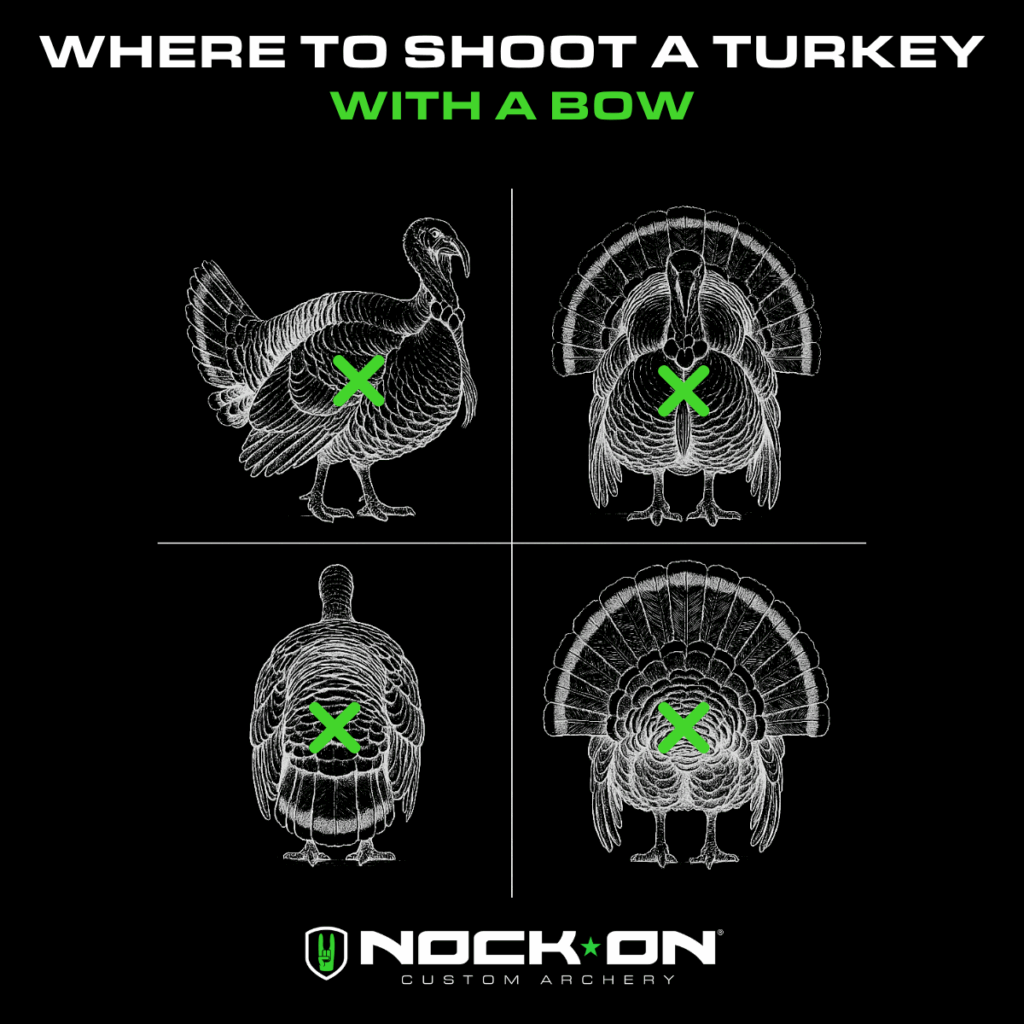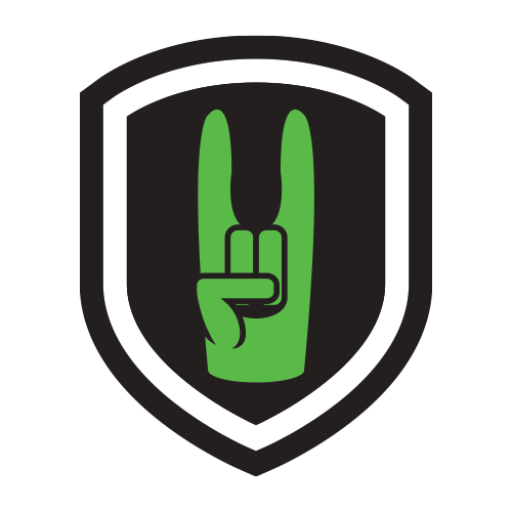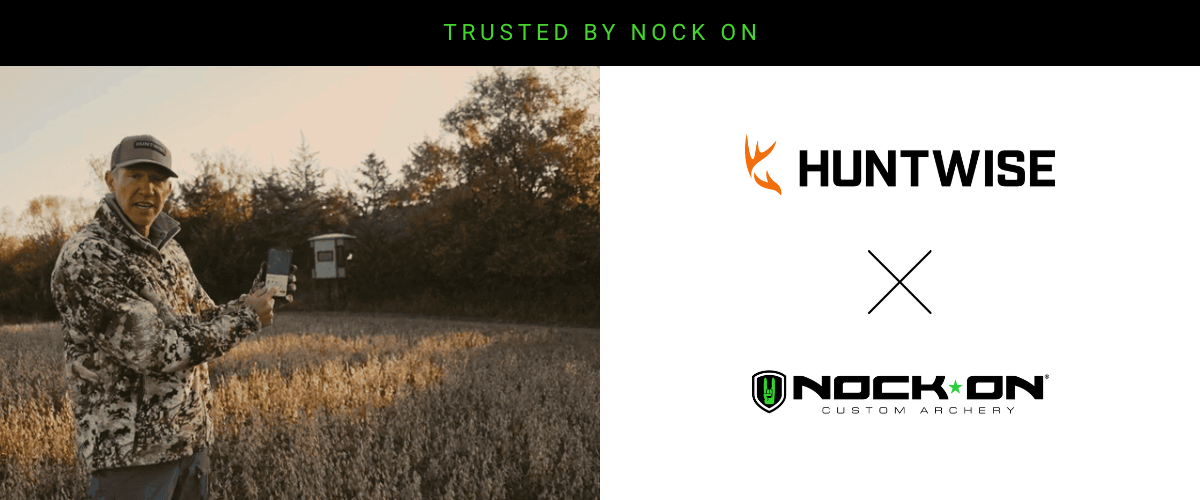Most bowhunters make a critical mistake when aiming at turkeys — they shoot for center mass. After harvesting gobblers with a bow for nearly three decades, I’ve identified one consistent reference point that delivers quick, ethical kills: the legs.
This isn’t theory or textbook anatomy. It’s a field-proven shot placement that immobilizes birds instantly and hits vital organs every time. If you’ve ever watched a wounded turkey sprint through the woods or take flight with your arrow sticking out of it, you know the nightmare I’m talking about when the placement isn’t spot-on.
Today, I’ll explain where to shoot a turkey with a bow for a quick, ethical harvest — its “wheels.” I’ll break down why the common approach fails, where the vitals actually sit, and how to use the legs as your aiming guide regardless of the angle you’re presented with.
Why Center Mass Fails on Wild Turkeys
Turkey anatomy throws off most bowhunters because what looks like center mass isn’t where the vitals are located.
That massive breast area might seem like where to shoot a turkey with a bow, but it’s just thick muscle with minimal blood vessels. Hit a turkey there, and you’re just punching through meat.
Think about cleaning a turkey or chicken. You access the body cavity from the back, between the legs — not through the breast. That’s because the heart, lungs, and vital organs are positioned low and toward the rear of the bird, protected by the pelvis and spine structure. They’re smaller and positioned much further back than many hunters assume.
When you aim at a gobbler’s breast, you miss the vitals. Even worse, you leave the bird’s escape mechanism — its legs — functional.
The Golden Rule: Follow the Legs Up
Here’s my fail-proof approach to remembering where to shoot a turkey with a bow: I use the turkey’s legs as my visual reference point regardless of conditions. Even when a gobbler is in full strut, puffed up and putting on a show, those legs remain visible.
I mentally trace a vertical line from where the drumstick connects to the body upward. This intersection point — where the upper leg meets the body — is my aiming zone. Here’s why it works:
- It’s where the pelvis and spine connect, creating immediate shock on impact.
- A hit here breaks the leg’s connection to the body, instantly immobilizing the bird.
- The heart, lungs, and gizzard are all positioned just above this junction.
- This reference point remains consistent whether the bird is standing, walking, or strutting.
A turkey needs functioning legs both to run and to generate enough momentum to take flight. Take out the legs, and the bird goes nowhere, even if your arrow placement isn’t perfect.
Where to Shoot a Turkey With a Bow by Angle
Broadside Shot
When a turkey is broadside to you, follow the drumstick straight up into the body.
Aim for the spot where the upper leg joins the main body cavity. A broadhead striking this area will likely break the leg connection while penetrating into the vital zone.
On my recent hunt (see the video above), my buddy Robbie knew exactly where to shoot a turkey with a bow and executed this shot perfectly. His arrow entered exactly where the drumstick connected to the body. The leg was instantly disabled, and the bird dropped without taking a single step.
No running, no flying — immediate harvest.
Going Away Shot (Non-Strutting)
When a gobbler is walking directly away, don’t aim through the fan feather. Instead, focus on the solid area at the base where the body feathers are horizontal, rather than the vertical tail fan feathers. This is centered just above where the legs join the body. You can actually hear the dense pelvis structure when you tap it.
An arrow through this spot penetrates the pelvis/spine and vital cavity from behind.
Frontal Shot
For a turkey facing you head-on, the beard is your best guide to aim your pin. Aim for the spot centered on the chest, just beneath where the beard emerges.
Sometimes, in a strutting position, this could be a little harder to see, but the beard is the key to the right height of placement.
This sends your arrow between the massive breast muscles and into the vitals. The shot is still lined up with where those legs connect internally.
The “Texas Heart Shot”
When a gobbler is strutting away from you, he creates the “golden triangle” or “Texas heart shot.”
This is the area directly above the vent, at the very base of the fanned tail. It’s essentially the same leg-junction aiming point, but viewed from behind. This spot aligns perfectly with where both drumsticks connect to the pelvis.
A well-placed arrow here creates devastating shock to the pelvis/spine connection while penetrating forward into the vitals. The bird collapses instantly with no chance of escape.

Where to Shoot a Turkey With a Bow: The Wheels Make the Difference
I’ve spent decades bowhunting turkeys across different terrain and scenarios, and I’ve learned that immobilizing the legs is the common factor in quick, clean harvests. The vitals are certainly important, but turkeys have an uncanny ability to run or fly even with significant damage if their legs still function.
Knowing where to shoot a turkey with a bow — using the leg-to-body junction as your consistent reference point — sets you up for success across all shot angles. You take out the “wheels” while creating shock to the structural system and penetrating the vital organs.
Next time you look at a turkey through your peep sight, resist the urge to aim center mass. Instead, find those legs, follow them up to where they connect, and place your arrow there.
The result will be exactly what every ethical bowhunter wants — a quick, clean harvest with no tracking required.






 massmonopoly
massmonopoly